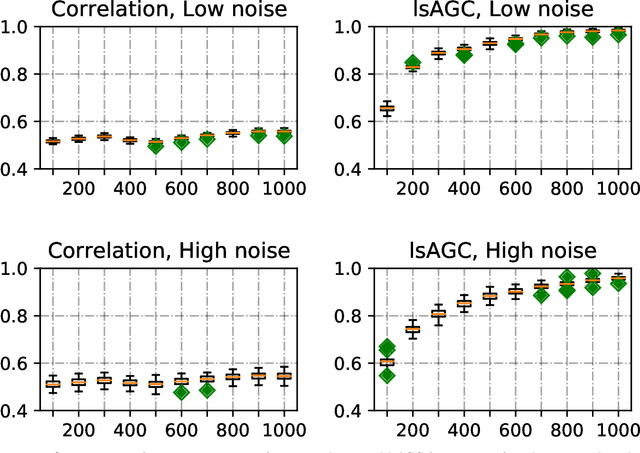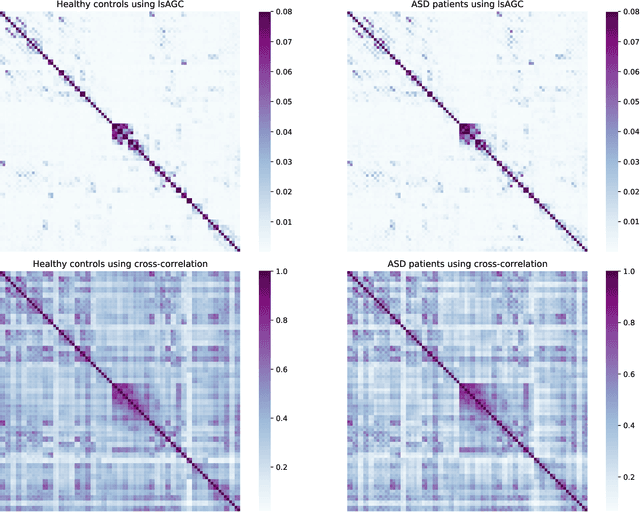Large-scale Augmented Granger Causality (lsAGC) for Connectivity Analysis in Complex Systems: From Computer Simulations to Functional MRI (fMRI)
Paper and Code
Jan 10, 2021

We introduce large-scale Augmented Granger Causality (lsAGC) as a method for connectivity analysis in complex systems. The lsAGC algorithm combines dimension reduction with source time-series augmentation and uses predictive time-series modeling for estimating directed causal relationships among time-series. This method is a multivariate approach, since it is capable of identifying the influence of each time-series on any other time-series in the presence of all other time-series of the underlying dynamic system. We quantitatively evaluate the performance of lsAGC on synthetic directional time-series networks with known ground truth. As a reference method, we compare our results with cross-correlation, which is typically used as a standard measure of connectivity in the functional MRI (fMRI) literature. Using extensive simulations for a wide range of time-series lengths and two different signal-to-noise ratios of 5 and 15 dB, lsAGC consistently outperforms cross-correlation at accurately detecting network connections, using Receiver Operator Characteristic Curve (ROC) analysis, across all tested time-series lengths and noise levels. In addition, as an outlook to possible clinical application, we perform a preliminary qualitative analysis of connectivity matrices for fMRI data of Autism Spectrum Disorder (ASD) patients and typical controls, using a subset of 59 subjects of the Autism Brain Imaging Data Exchange II (ABIDE II) data repository. Our results suggest that lsAGC, by extracting sparse connectivity matrices, may be useful for network analysis in complex systems, and may be applicable to clinical fMRI analysis in future research, such as targeting disease-related classification or regression tasks on clinical data.
 Add to Chrome
Add to Chrome Add to Firefox
Add to Firefox Add to Edge
Add to Edge